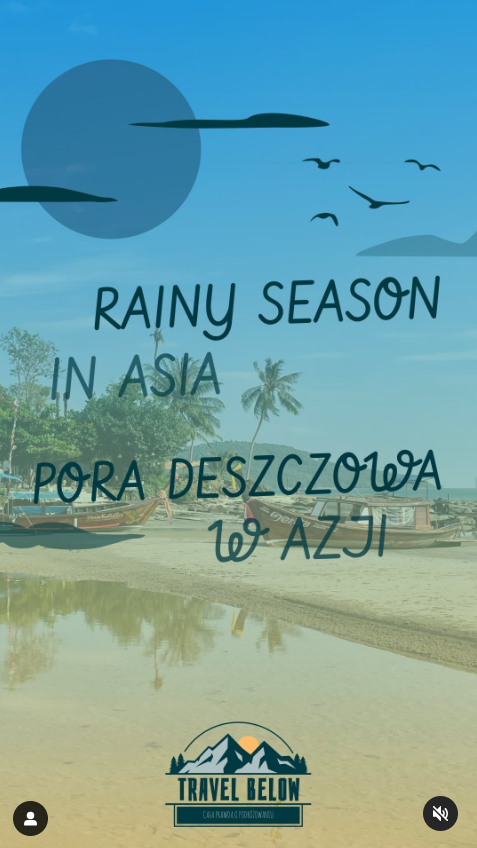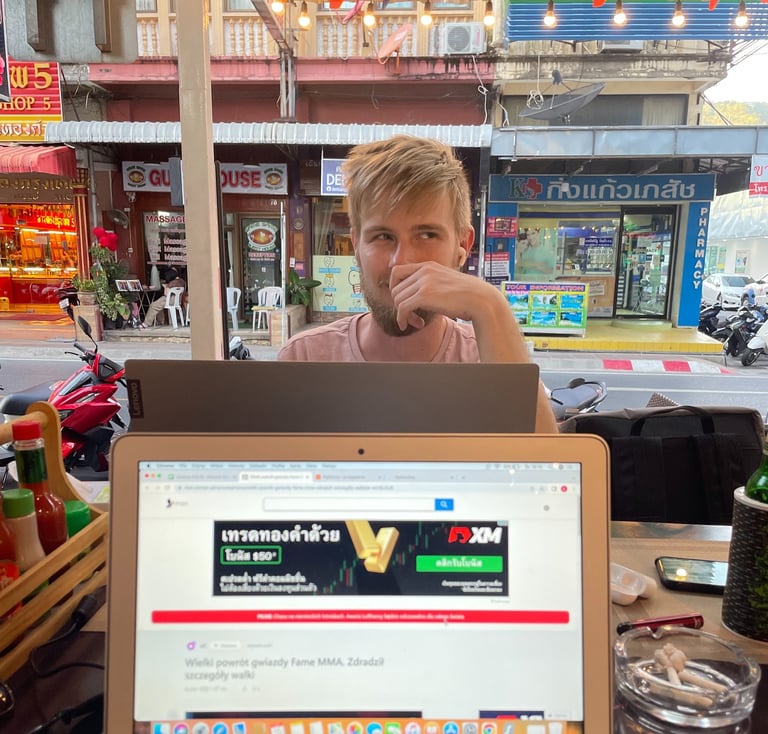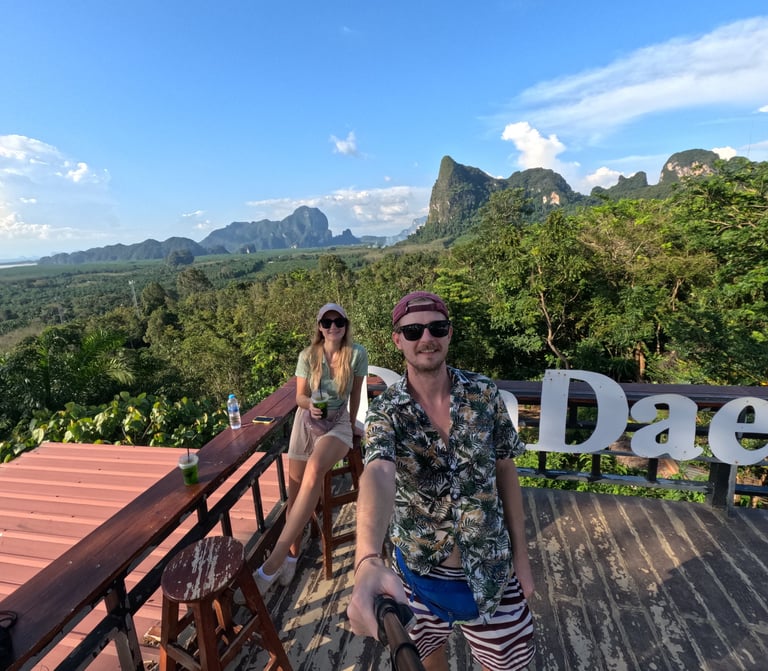
When is the best time to travel?
W E A T H E R
When is the best time to travel?
That’s a broad question - and the answer depends on what you’re looking for and what your budget allows. Thailand is a large and geographically diverse country, with each region having its own microclimate and weather patterns. The good news? You can visit the Land of Smiles almost all year round - you just need to know where to go and when.
Let’s look at two key factors:
A – the best weather
B – fewer tourists
Northern Thailand - the best time to visit the north is from September to February - though that’s also the busiest tourist season. Avoid July and August, as that’s the rainy season and some attractions may be closed. On the other hand, waterfalls are at their most beautiful and the rice fields shine a vivid green. In spring, farmers burn their fields, making the air extremely polluted - it’s common for locals to wear masks and even stay indoors. It’s definitely not the best time to enjoy the nature that the region is known for.
Bangkok - the capital enjoys decent weather almost all year round, and rain isn’t much of a problem - most sightseeing involves temples and museums, and you can easily manage with a raincoat. However, late March and April are unbearably hot. April also brings Songkran, Thailand’s famous water festival. In Bangkok, it becomes massive - and not always enjoyable if you happen to be catching a flight that week. Traffic jams can last hours, and accommodation prices skyrocket.
Koh Samui, Koh Phangan & Koh Tao - these islands enjoy great weather most of the year - from February to mid-September it’s nearly perfect. Expect intense heat in March and April, and more crowds from June to August. Rainy season typically runs from mid-September to January. If you visit outside peak season, it’s better to take the ferry instead of a speedboat, as waves can get quite rough - not the most comfortable ride!
Krabi, Phuket & Koh Lanta - this region has the shortest good-weather window - roughly mid-November to February. Then come the hot months (March and April), followed by the monsoon, bringing humidity, rain, and big waves. If you still decide to visit during the European summer, remember that some islands close during the rainy season. In August and September, you won’t be able to visit Maya Bay, and the Similan and Surin Islands (near Khao Lak) close even earlier.
If you want to save some money but, most importantly, avoid the crowds – it’s best to fly to Koh Samui in early September or around May/June, or to Krabi around October/November. Keep in mind that short rain showers may occur during this time, but they shouldn’t ruin your trip – these are not long-lasting downpours, just brief tropical rains that refresh the air. Avoid long weekends, the Christmas and New Year holidays, and school breaks – many families with children travel to Thailand during those two weeks, which means flight prices go up. The worst months to visit the Andaman Sea are July, August, and September, and for the Gulf of Thailand – October, November, and December.
Of course, that’s “on paper”. We all know that weather around the world has been unpredictable for some time now, and it’s impossible to forecast it perfectly.
Sometimes, when traveling off-season, you might get lucky and enjoy a beautiful window of sunshine – if so, good for you! But it can also happen that, due to strong winds, your plane will have to land elsewhere (even in another country), or you’ll experience flooding and impassable roads. Remember that the rainy season is not just a bit of rain - it’s intense tropical downpours, big ocean waves, power cuts, suspended boat services, closed attractions, trash washed up on beaches, murky water instead of turquoise, strong winds, musty bungalows, waking up with a headache, high humidity and constantly damp clothes, swarms of mosquitoes, and even leeches. In my case, a monsoon-season trip to Sri Lanka – even though we have great memories from it – ended with a bladder infection and a two-week allergic rash on the back of my thighs from sitting in damp clothes on buses (it kept raining – everything was wet)
So if possible, try to plan your vacation outside the peak of the monsoon, especially if your trip is short - 2–3 weeks. If you’re going to Thailand for a longer stay - 2–3 months – and don’t plan on daily sightseeing, you’ll manage just fine spending time on the balcony, playing cards or pool, and sipping a beer at a local bar. But if it’s a short getaway, honestly, it’s not worth it - you’ll spend tens of thousands on the trip, and it would be such a waste. It’s better to pay an extra thousand dollars for flights during the good season than to save that and end up stuck in a hotel. That’s just my personal opinion
Whatever you choose, I wish you an amazing vacation and lots of sunshine ☀️
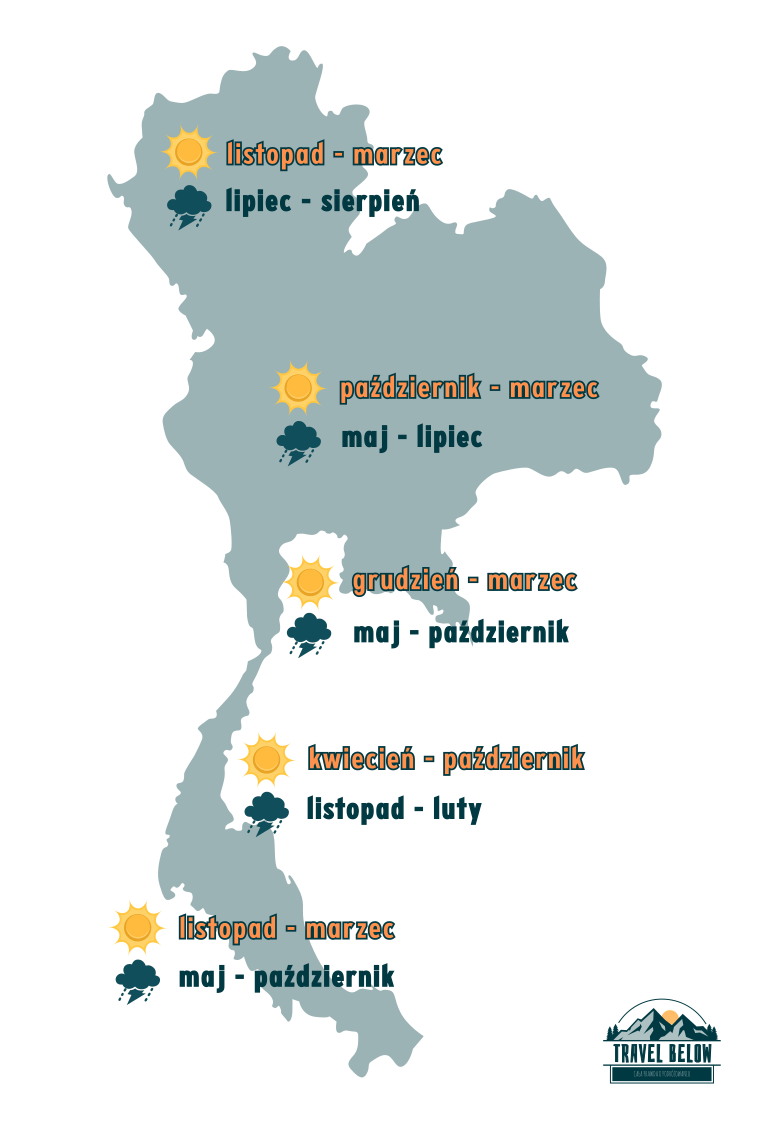


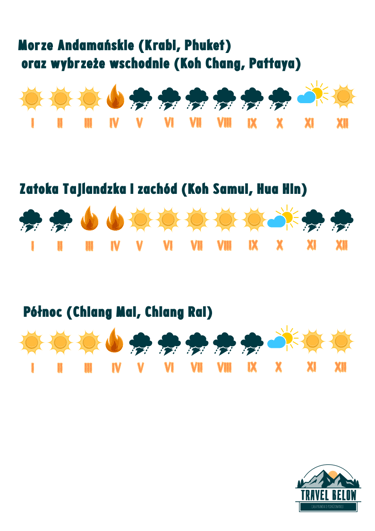

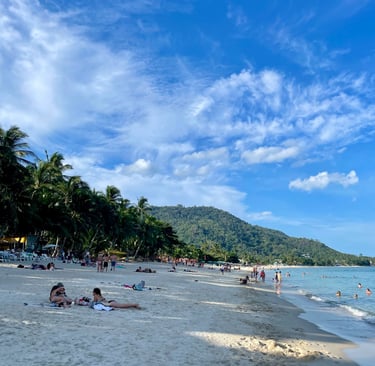
Don’t forget to follow us on Instagram, where we share our everyday life and real-time weather updates from Thailand, Vietnam, and other countries we’ve visited over the past two years.
Need help planning your vacation?
Heading to Thailand? Need someone to plan your holiday, or just a few tips and a chat?
We’re here for you.
Drop as a line
Do you have questions about traveling to Asia? Suggestions for the blog? Want to collaborate? Need help or just want to meet for coffee?
Feel free to get in touch.

